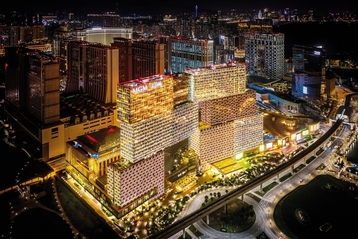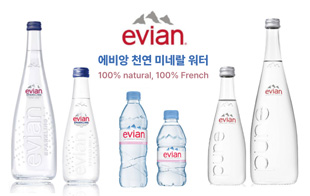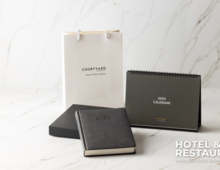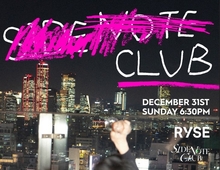Instant Coffee Still is King!
여전히 인스턴트 커피가 왕!
There is no doubt that gourmet coffee is still a growth industry in most developed countries but did you know that a big part of the world is going in the opposite direction towards instant coffee! The Washington Post had an interesting article recently about this phenomenon. Sales of instant coffee have nearly tripled since 2000, according to data from Euromonitor International. The world consumed nearly $31 Billion in 2013 and that figure is expected to grow to $35 Billion by 2018. Instant coffee accounts for more than 34% of all the retail coffee consumed around the world. As expected, instant coffee does best in markets without a strong coffee drinking tradition. It is basically an entry point for the two fastest growing markets of China and India, but is also is more affordable.
Surprisingly, instant coffee accounts for over 75% of retail coffee consumed in Australia and New Zealand, the highest percentage for any region in the world. This probably means that consumers down under drink the better stuff in the ubiquitous Italian style coffee houses and not in their homes where instant coffee appears to be good enough. Also, instant coffee is not that popular in the USA given the prevalence of affordable ground coffee used in drip machines that can be found in all supermarkets. So despite my aversion to instant coffee – I personally hate the stuff – it shows no signs of dying off any time soon. In fact, it is more popular than ever. Go figure!
고급 커피(gourmet coffee)가 대부분의 선진국에서 여전히 성장산업이라는데 의심의 여지가 없다. 그러나 세계의 다른 지역에서는 정반대로 인스턴트 커피가 성장세이다. 워싱턴 포스트는 이러한 현상에 대해 흥미로운 기사를 내놓았다. 유로모니터 인터내셔널(Euromonitor International)에 따르면 인스턴트 커피의 판매는 2000년 이래 거의 3배 증가했고, 2013년 한 해 동안 전 세계적으로 310억 달러가 소비됐으며 그 수치는 2018년까지 350억 달러까지 증가할 것으로 보인다. 인스턴트 커피는 전 세계 커피 소매업 판매량의 34% 이상을 차지한다. 예상한대로, 커피 문화가 덜 활성화된 시장에서는 인스턴트 커피가 잘나간다. 기본적으로 가장 빠르게 성장 중인 중국과 인도, 두 시장에서는 인스턴트 커피가 좁 더 적합하고 시장에 진입하기도 쉽다.
놀랍게도 인스턴트 커피는 호주와 뉴질랜드 소매점 판매량의 75%를 차지하며, 세계 다른 어떤 지역보다 높은 점유율을 보인다. 아마 남반구의 두 나라, 호주와 뉴질랜드의 소비자들이 집에서는 충분히 좋은 인스턴트 커피를 마실 수 있기 때문에 이탈리안식 커피숍에서는 커피보다 더 나은 음료를 마시는 게 아닌가 싶다. 인스턴트 커피는 미국에서는 그다지 인기 있지 않은데, 이는 (모든 슈퍼마켓에서 판매되는) 커피 머신에 이용되는 적당히 굵은 분쇄 커피의 인기에서 비롯된 것 같다. 개인적으로 인스턴트 커피를 아주 싫어하지만, 빠른 시일 내 인스턴트 커피 유행이 사라질 것 같진 않다. 사실, 이상하게도 인스턴트 커피는 예전 그 어느 때보다 인기 있다.
Chinese Malls Now Hunger for Restaurants
중국 쇼핑몰은 레스토랑을 갈망한다
Those of us in the food service industry in Hong Kong know the feeling of seeing our favorite affordable restaurants close in all the popular malls in town. Landlords are simply unwilling to allow valuable real estate to be taken up by fast food or casual dining concepts when they can get higher rent from luxury fashion brands. Of course they are trying to appeal to the Mainland Chinese shopper with their hunger for French and Italian chic! The Asia Wall Street Journal had an interesting story recently entitled “Malls Now Hunger for Restaurants,” and noted that the situation in China is quite different from Hong Kong. First, Beijing’s crackdown on corruption is hurting sales at luxury restaurants as local officials are now reluctant to run the risk of entertaining at night for fear of being exposed on social media. Second, e-commerce is hurting fashion retail big time. Chinese consumers may visit the malls to try on their favorite shoes or shirts, but they often order the items on line rather than buy at the shop. More and more fashion shops are closing down and mall developers need to find new tenants that can fill the spaces and appeal to their customers.
홍콩 외식업 종사자들은 자신들이 좋아했던 적당한 수준의 레스토랑들이 문을 닫고 있는 상황을 지켜보고 있다. 모든 유명한 쇼핑몰 내 입점 레스토랑들이 점점 문을 닫고 있는 형국이다. 건물주는 럭셔리 패션 브랜드로부터 더 높은 임대료를 받을 수 있는 상황에서, 패스트푸드 혹은 캐주얼 다이닝 콘셉트 브랜드가 가치 있는 부동산을 차지하는 것을 내켜하지 않는다. 물론 프랑스와 이탈리안 레스토랑을 갈망하며 이를 본토 중국 쇼핑객들에게 어필하려고 한다. 아시아 월스트리터저널은 최근 ‘레스토랑을 갈망하는 쇼핑몰(Malls Now Hunger for Restaurants)’이라는 제목의 흥미로운 기사를 게재하며, ‘중국의 상황이 홍콩과 아주 다르다.’고 덧붙였다.
우선, 베이징시의 부패에 대한 단호한 조치 때문에 지방 관료들이 소셜 미디어에 폭로되는 것이 두려워 밤에 유흥을 즐기는 것을 꺼리고 있고, 이는 럭셔리 레스토랑 영업에 악영향을 미친다. 두 번째, 전자상거래가 패션 소매업에 큰 피해를 주고 있다. 중국 소비자들은 자신들이 좋아하는 신발 또는 셔츠를 착용해보기 위해 쇼핑몰을 방문한다. 그러나 소비자들은 종종 상점에서 사기보다는 온라인으로 상품을 주문하곤 한다. 이에 영향을 받아 점점 더 많은 패션숍들이 문을 닫고 있고, 쇼핑몰 개발업자들은 고객을 끌고 쇼핑몰 자리를 채울 새로운 세입자를 찾으려 한다.
Food service is still growing 10% per year in China and more consumers are interested in international cuisines as they travel frequently abroad and are exposed to new flavors. Several luxury goods makers are now diversifying their portfolios and investing in restaurant chains with high growth potential. Recently, the private equity arm of LVMH, acquired a 90% stake in Singapore based Crystal Jade Culinary Concepts Holdings, a chain with 120 restaurants across Asia. They also acquired majority ownership of the Milanese coffee house, Cova, which has been quite popular in Hong Kong. Chinese Private Equity firms are also getting into the act, with Hony Capital buying the UK restaurant chain, Pizza Express for $1.5 Billion. The brand is quite popular in the casual dining space in Hong Kong but only has a few stores on the Mainland.
While there is no doubt that the F&B sector still has significant room to grow, the situation is very different in secondary cities compared to Tier 1 areas like Beijing and Shanghai. Consumers are far more price sensitive in Tier 2-3 cities and less inclined to eat Western food. However, affordable Chinese and other Asian food chains are growing rapidly and the stores are very busy.
In short, food service is definitely in demand by Chinese malls but restaurants are unlikely to match the current rents for luxury goods retailers. The mall business model could face considerable challenges going forward.
중국에서 외식업은 여전히 매년 10%씩 성장 중이다. 더 많은 고객들이 빈번하게 외국에 가서 새로운 맛을 접하면서 세계 요리에 관심을 보이고 있다. 몇몇 럭셔리 제품 생산 회사는 자사 포트폴리오를 다각화하며, 높은 성장 잠재력을 갖춘 레스토랑 체인에 투자하고 있다. 최근, LVMH(루이비통 모에 헤네시: Louis Vuitton Monët Hennessy) 그룹의 프라이빗 에쿼티 암은 아시아 전역 120개의 레스토랑 체인을 갖춘 ‘Crystal Jade Culinary Concepts Holdings’에 기반을 둔 싱가포르 지분의 90%를 획득했다. 또한 홍콩에서 상당히 유명한 밀라노 커피하우스, ‘코바(Cova)’ 의 과반수 이상의 소유권을 얻었다. 중국 개인 자본 회사도이에 한 몫하고 있다. 호니 캐피탈(Hony Capital)은 영국의 레스토랑 체인, 피자 익스프레스(Pizza Express)를 15억 달러에 샀다. 이 브랜드는 홍콩의 캐주얼 다이닝 분야에서는 아주 유명하지만, 본토에는 지점이 몇 개 없다.
반면 F&B 부문에서 여전히 성장할 요소가 많고, 베이징과 상하이 같은 ‘티어(Tier) 1’ 지역과 비교했을 때 이차적인 도시에서의 상황은 매우 다르다. ‘티어(Tier) 2-3’의 도시 소비자들은 가격에 좀 더 민감하며 서양식 음식에 대한 선호도가 낮은 편이다. 그러나 적당한 수준의 중국 또는 아시안 푸드 체인들은 급속하게 성장하고 있고 레스토랑은 항상 붐빈다.
요약하면, 확실히 중국 쇼핑몰의 외식업 수요는 많으나 레스토랑이 현재의 럭셔리 제품 소매업의 임대료를 맞출 개연성은 낮다. 따라서 쇼핑몰 비즈니스 모델은 앞으로 상당한 도전에 직면할 수 있다.
Why It Took So Long for Korean Food To Get Popular in America.
한국 음식이 미국에서 인기를 얻는데 왜 오랜 시간이 걸리는가?
I found an interesting article on seriouseats.com about the growth of Korean food in America, titled “How Korean Cuisine Got Huge in America(And Why It Took So Long).” Korean food for many years stayed within the Korean communities and restaurant owners had no interest in marketing their stores to non-Koreans. There was no Americanized signature dish like Pad Thai or General Tso’s Chicken to appeal to the American palate. It took the rise of the Korean chef in America to make it popular in key urban areas. Chefs like Roy Choi, David Chang and others were featured on food related shows on cable TV. American and European chefs visited the hot Korean restaurants in K-Towns late at night when their shifts ended to see what the hype was all about, and then began to add some of the flavors to their own menus. Using some Korean ingredients added some intrigue to the traditional Italian or French flavors as well. Finally, it is fair to say that Americans eased into Korean cuisine by trying relatable dishes like Korean barbecue, food trucks and fried chicken. Once they became comfortable with these flavors they were willing to experiment with more. There is also a health angle that could be played up with Korean cuisine that has been done successfully with Japanese food for many years – mostly gluten and dairy free food with lots of vegetables and seafood.
‘seriouseats.com’에서 ‘어떻게 한국 요리는 대단한 인기를 얻게 됐는가(그리고 왜 긴 시간이 걸렸나)’라는 제목의 미국내 한국 음식의 성장에 관한 흥미로운 기사를 보았다. 한국 음식은 오랜 시간 한국인 커뮤니티 안에만 머물러왔다. 더군다나 한식 레스토랑 오너는 자신들의 가게를 한국계 외 다른 미국인들에게 마케팅하는데 관심이 없다. 한국 음식에는 팟타이(Pad Thai), ‘좌 장군의 닭(General Tso’s Chicken)’과 같이 미국인의 입맛에 맞는 미국화된 시그니처 디시가 없다. 미국 주요 도심 지역에서는 한국인 셰프가 점점 많아지고 있고 이들이 한국 음식을 유명하게 만들고 있다. 로이 최(Roy Choi), 데이비드 장(David Chang)과 같은 유명 셰프들은 케이블 TV의 요리 관련 프로그램에 등장한다. 미국과 유럽계 셰프들이 늦은 밤 코리아타운 내 인기 있는 한국 레스토랑을 방문한다. 뭔가 대단한 일이 펼쳐지기를 기대하며, 레스토랑 요리팀은 일을 마무리한다. 그리고 기존 레스토랑 메뉴에 몇 가지 맛을 추가한다. 한국 식재료를 이용하여 전통적인 이탈리안, 프렌치 맛에 흥미로운 요소를 첨가한다. 마침내, 미국인들이 코리안 바비큐, 푸드 트럭과 프라이드 치킨과 같은 요리를 시식하면서 한국 요리에 친숙해진다. 이러한 과정을 통해 한국의 맛에 익숙해지고 나면 요리를 가지고 좀 더 다양한 실험을 해보려고 한다. 또한 수년간 일본음식과 성공적으로 조화롭게 쓰였던 ‘건강식’ 콘셉트도 한국 요리와 잘 어울릴 수 있다. - 대부분 글루텐과 유제품이 함유되지 않은 야채와 해산물이 많은 음식이다.
Euny Hong, the author of “The Birth of Korean Cool,” suggests that the Korean government also had a big part to play by spending billions to market Korean culture around the world – music, TV dramas and food. It appears that this industrial policy when practiced in the culture area was more successful than expected.
So we can thank the celebrity chefs, health awareness and the Korean government for getting the Korean food boom started in America. I think it still has a long way to go in the land of hot dogs and hamburgers!
‘The Birth of Korean Cool’의 저자 유니 홍(Euny Hong)은 “한국 정부가 전세계에 음식, TV 드라마와 같은 한국 문화를 마케팅하기 위해 수십억 달러를 쓰며 큰 역할을 했다.”고 설명했다. 이 산업 정책은 문화 영역에서 실행됐을 때 예상보다 성공적인 것 같다.
미국에서 시작된 한국 음식 붐은 고맙게도 이들 스타 셰프와 건강에 대한 대중들의 인식, 그리고 한국 정부 덕분이다. 하지만 한국 음식이 핫도그와 햄버거의 영역까지 진출하려면 여전히 갈 길이 멀다.
<2014년 9월 게재>
조엘 실버스테인 Joel Silverstein
이스트웨스트 호스피탤리티 그룹 대표
President of The East West Hospitality Group
조엘 실버스테인 대표는 장기간 아시아 퍼시픽 지역에 살며 최고 경영진과 포춘(Fortune) 500대 기업이 중국, 홍콩, 일본, 한국 외 다수 아시아 국가에서 지속 가능한 성장을 할 수 있게 도와주었다. 실버스테인 대표는 호스피탤리티 산업의 전 경영진으로서 주요 언론 매체를 통해 중국 동남아시아의 프랜차이즈, 아시아에서의 비즈니스 관행, 역동적인 이머징 마켓과 관련된 주제로 빈번하게 기고하였다. 현재 홍콩에 거주하며, 자주 인근 아시아 지역 뿐만 아니라 미국, 유럽, 아프리카 지역까지 여행한다.

























